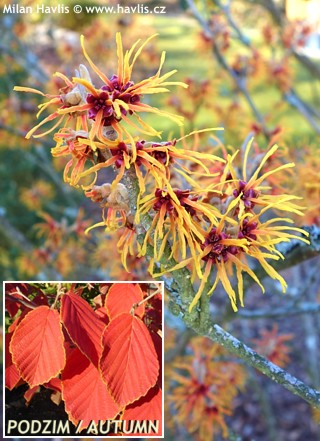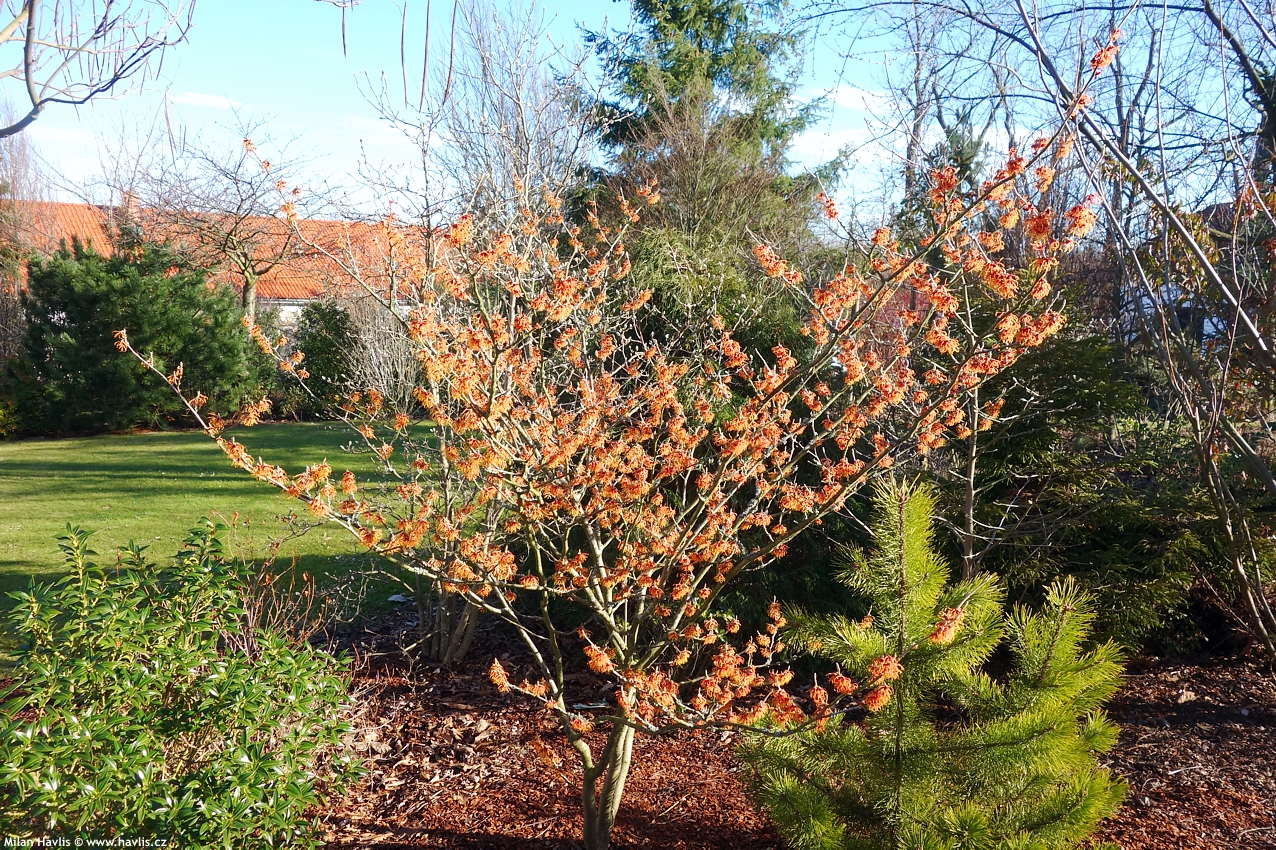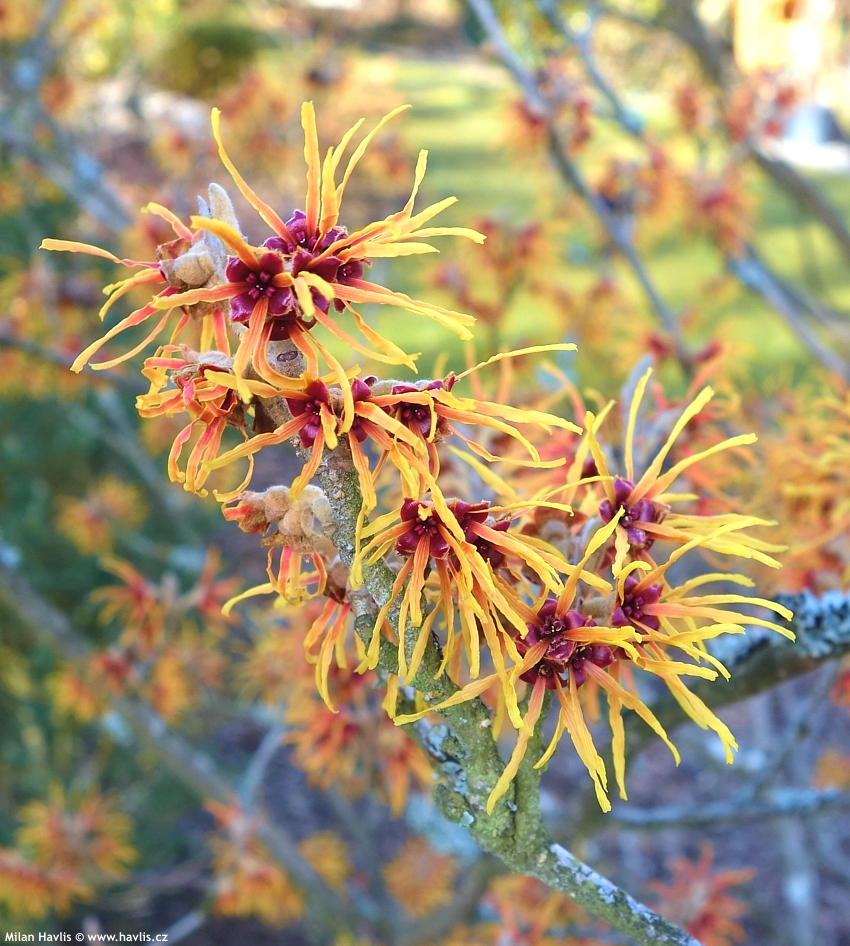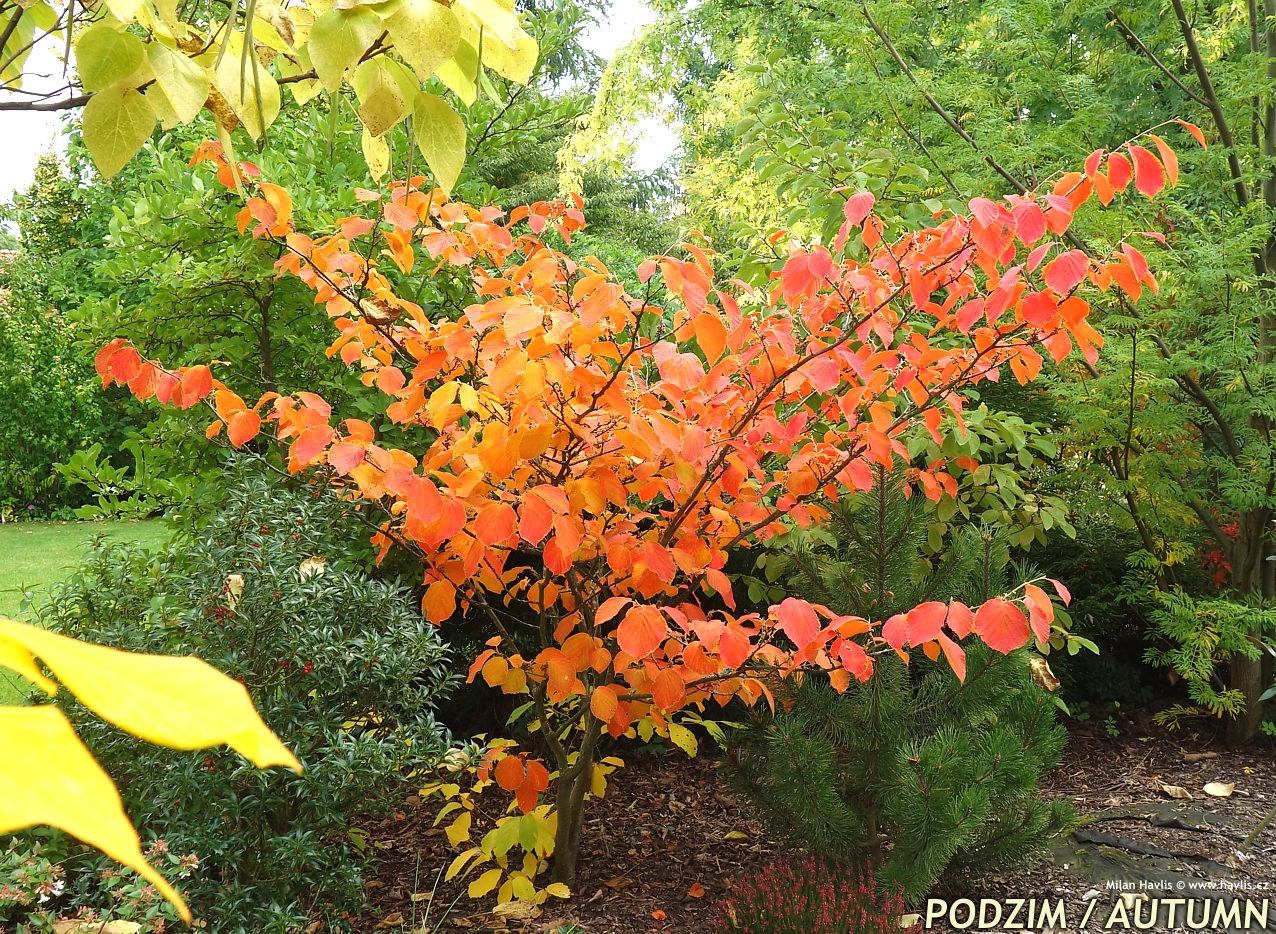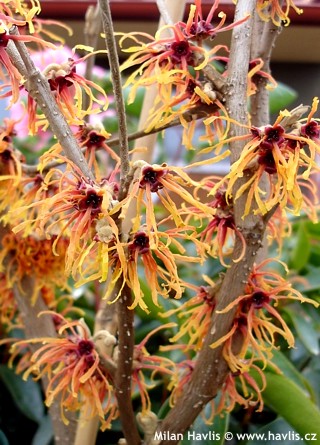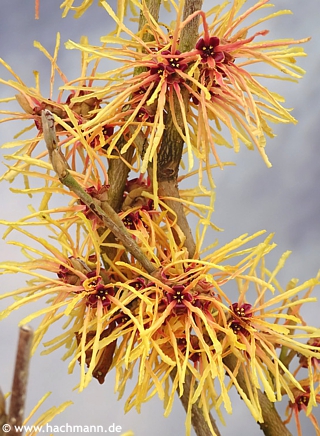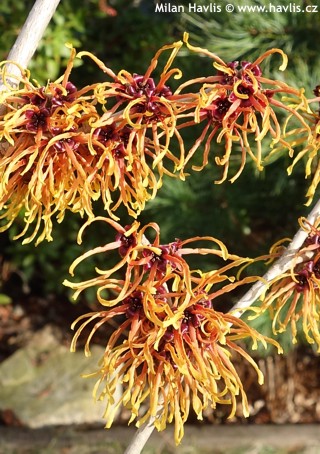Hamamelis x intermedia 'JELENA' witch hazel
Hamamelis
Witch hazels are unique shrubs that offer profuse flowering at times when everything else in the garden looks dull and far from cheerful. They are hybrids Asian species h.japonica and h.mollis. They form deciduous, mid-sized shrubs or small trees of an open vase shape, and thanks to its maximum size of about 3m they fit even a small garden.
Jelena is my top favourite witch hazel, and historically the very first orange flowering variety in the world. It produces masses of fiery orange, fringe-like, beautifully scented flowers early in the season. If the weather is sunny and warm it may produce its first flowers from January and continue flowering for as long as 8 weeks unless spoiled by sudden spring heat. Leaves are similar to hazel, but larger and turn bright coral red with a yellow margin in autumn.
This variety was bred by one of the witch hazel pioneers Jelena de Belder-Kovačič (1925-2003) from former Yugoslavia (now Croatia). After graduating University of Zagreb with a degree in agronomy she was granted a rare permit to study abroad so in 1952 she left Zagreb to study in Denmark, Germany, and the Netherlands. In 1955 a Belgium diamond merchant Robert de Belder and his brother George saved an old nursery with a huge collection of ancient trees in Kalmhout from turning to a housing estate. Having heard of that Jelena bicycled to the nursery to meet them and to discover the natural treasure. Seeing Robert’s passion for plants they started working together and a romantic relationship quickly developed between them. After three months they got married. Jelena settled in Belgium permanently and started breeding hamamelis and later other species (rhododendron, hydrangea, prunus, and malus). In 1955 their first witch hazel bloomed with extraordinary and very fragrant orange flowers. Robert named it after his wife Jelena and entered it at an exhibition in London where it received a Certificate of Merit by the RHS (Royal Horticultural Society).
Grow them in acid to neutral, moist but well drained soil. They don’t tolerate lime or hard pruning when older. Sunny location or light semi-shade is best. Fully hardy to about -29°C (USDA zone 5) but exposed sites are not recommended.
Last update 22-12-2008; 14-02-2011; 01-03-2020

































